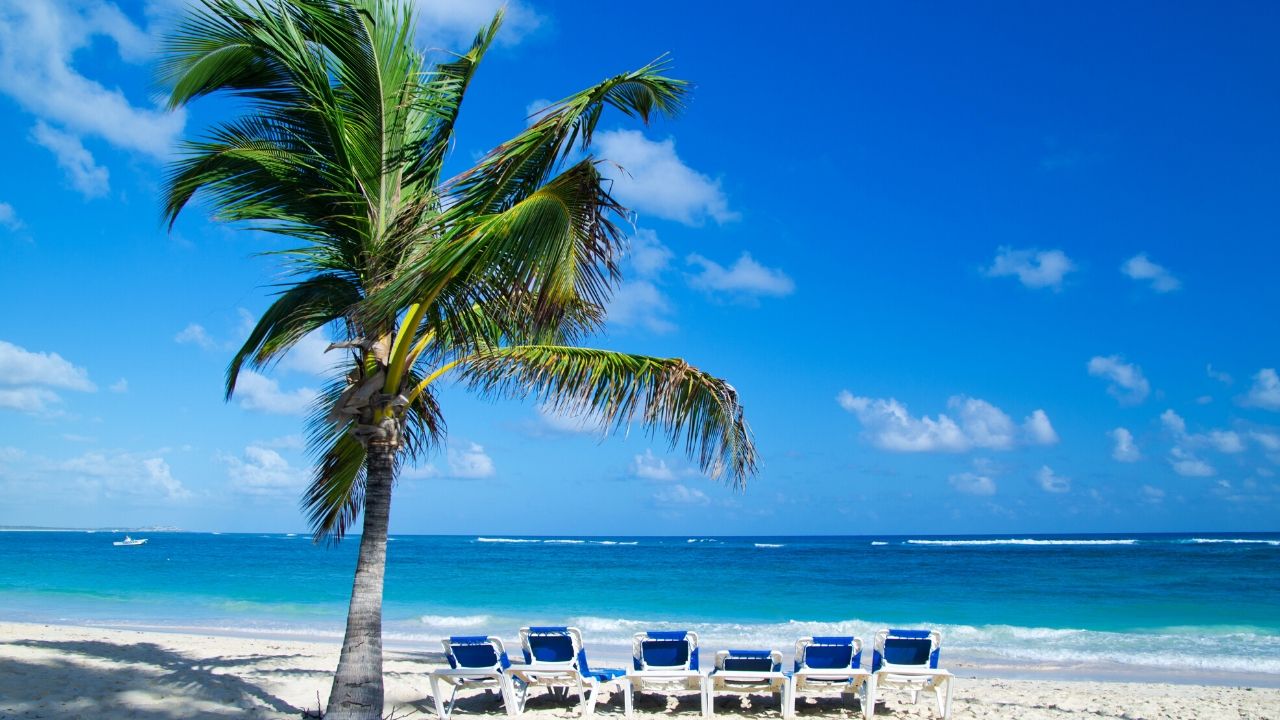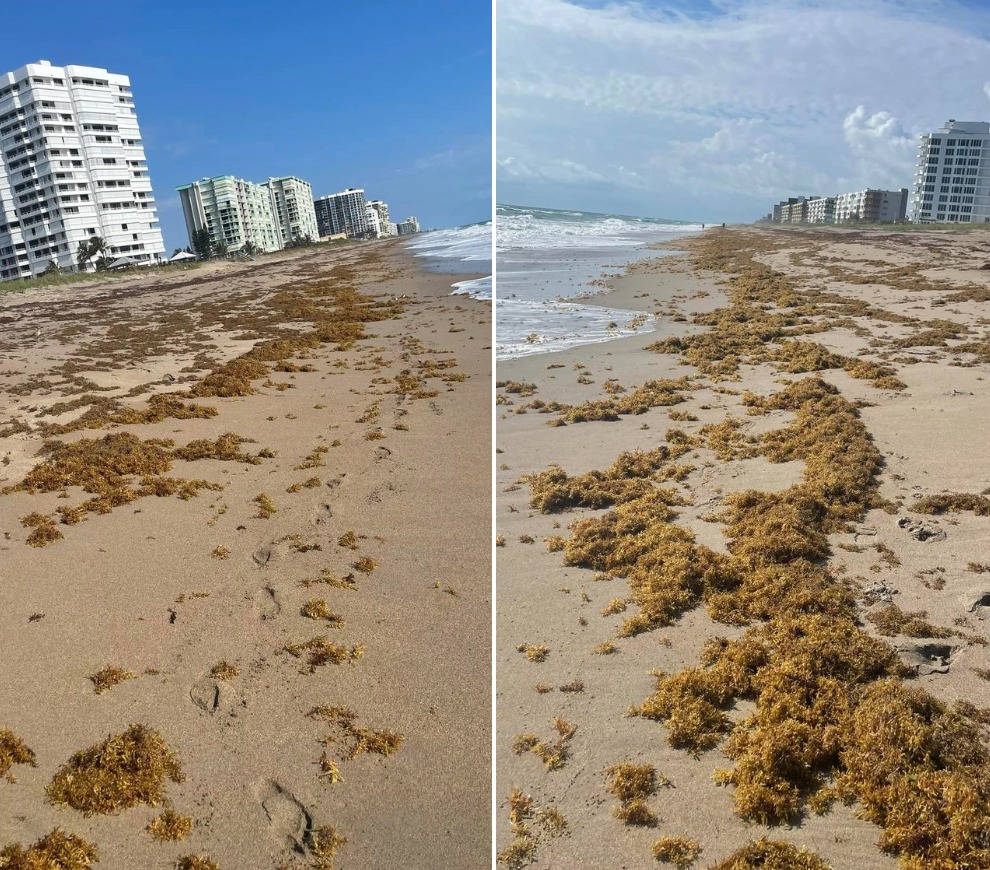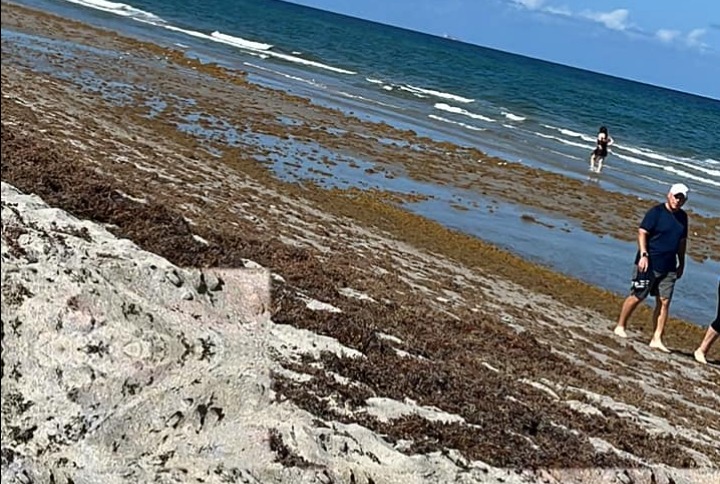Massive amounts of the seaweed known as sargassum are washing up on the beaches of Florida’s east coast, causing concern among beachgoers. The seaweed is part of a large seaweed blob that is floating in from the Atlantic Ocean, and it has the potential to cover the beaches for miles. The influx of sargassum is expected to continue for several months.
Owner of a condo at Miami Beach for more than 20 years, Oscar Vasquez, claimed to have never observed so much sargassum so early in the season.
“There are parts of the beach where there’s so much sargassum on the shoreline where it’s undesirable and difficult to get into the water,” Vasquez said.
The tufts of brown weeds that cover the beaches are laboriously removed by specialized tractors, but the seaweed usually reappears the next morning. Sargassum is collected with the intention of using it as filler, but in the meantime, it is piled up off the coast and gives off a bad smell.
Few photo updates from monitoring FB group:
Southernmost Point Buoy

EAST WIND, Jensen Beach

Delray Beach

Sargassum is a natural phenomenon, but this year’s bloom caught the attention of researchers because of its size. This year, the amount of seaweed in the Great Atlantic Sargassum Belt has increased to about 13.5 million metric tons.
According to the University of Miami doctoral candidate Afeefa Abdool-Ghany, the increase in sargassum growth can be linked to the increase in nutrient-rich wastewater generated by the growth of the world’s population. The sewage is discharged into rivers, which then make their way to the sea. They provide nutrients to the sargassum, acting as a fertilizer and promoting its rapid reproduction.
The potential of sargassum for constructive use is being studied intensively by researchers such as Abdool-Ghany.
“Instead of putting it into a landfill, we wanted to compost it into a usable product can be made from it,” Abdool-Ghany said.
Research is still being done on workable solutions to the sargassum problem, and they have yet to be put into practice. However, Miami-Dade County officials are taking steps to protect the region’s important tourism revenue and maintain property values by conducting daily beach cleanups.
Miami-Dade County is asking the state for an additional $2 million on top of the $3.9 million they have already set aside for cleanup this year.
The importance of balancing the protection of local species and the beaches from sargassum was emphasized by Daniella Levine Cava, the Mayor of Miami-Dade County. Some cleanup methods are restricted by federal guidelines to safeguard native species like sea turtles and fish hatchlings.
The post Massive Clumps Of Smelly Sargassum Continue Covering Florida’s Beaches appeared first on Traveling Lifestyle.
-----------------------------
By: Maria Valencia
Title: Massive Clumps Of Smelly Sargassum Continue Covering Florida’s Beaches
Sourced From: www.travelinglifestyle.net/massive-clumps-of-smelly-sargassum-continue-covering-floridas-beaches/
Published Date: Thu, 04 May 2023 01:17:55 +0000
Read More
Did you miss our previous article...
https://carefreevoyage.com/digital-nomads/8-amazing-hidden-gems-to-visit-in-germany-in-2023
 Privacy PolicyTerms And Conditions
Privacy PolicyTerms And Conditions
